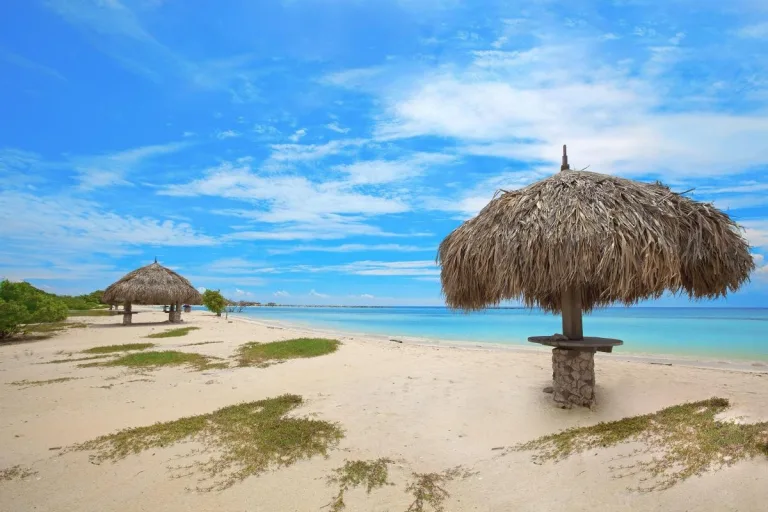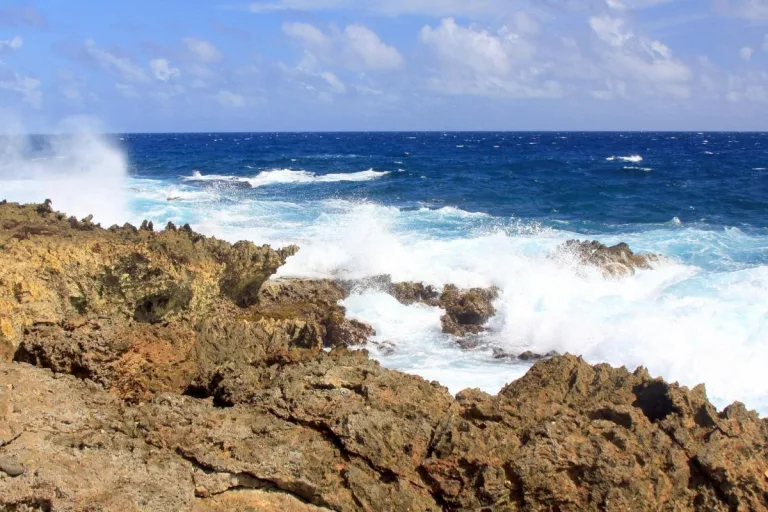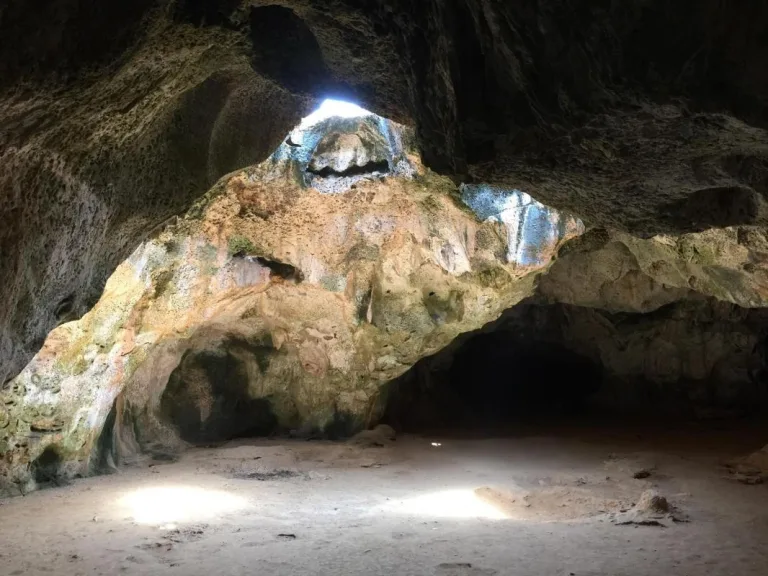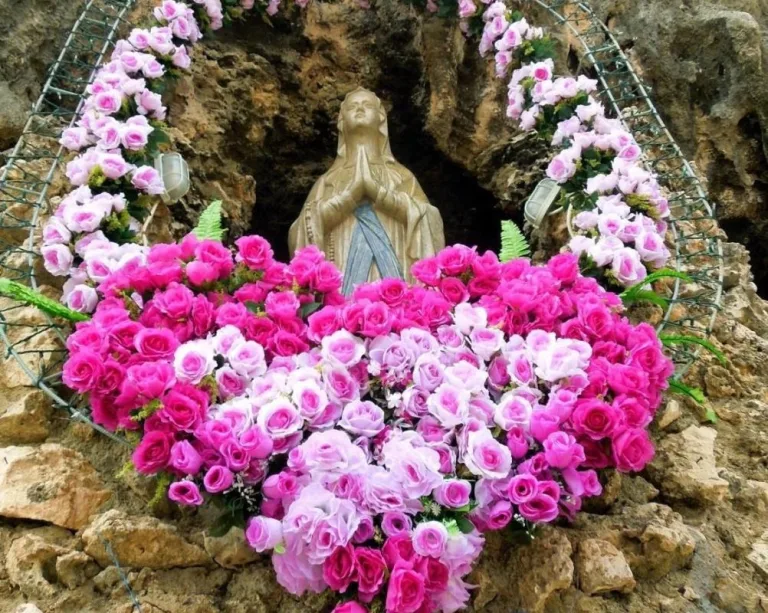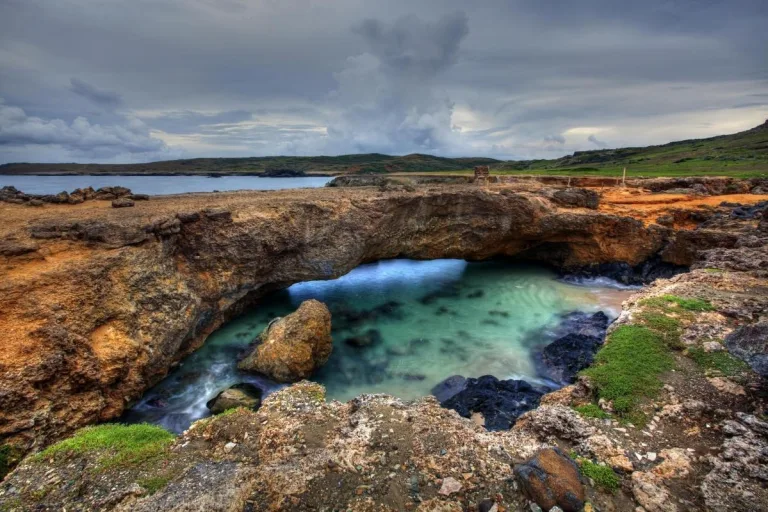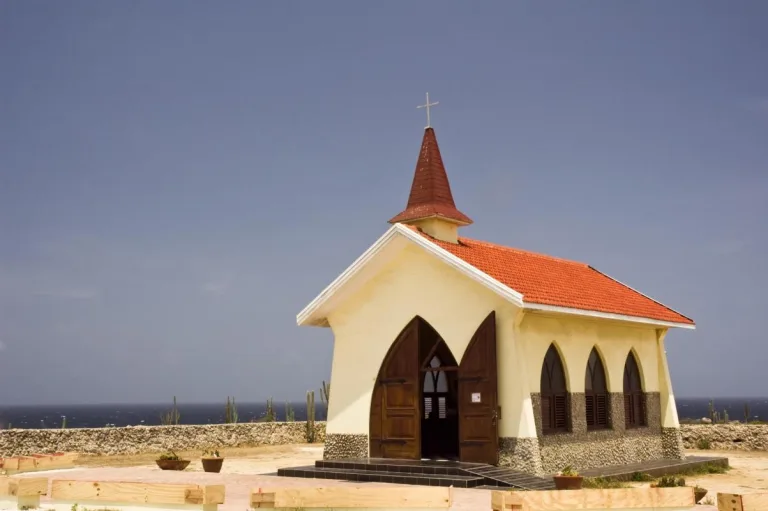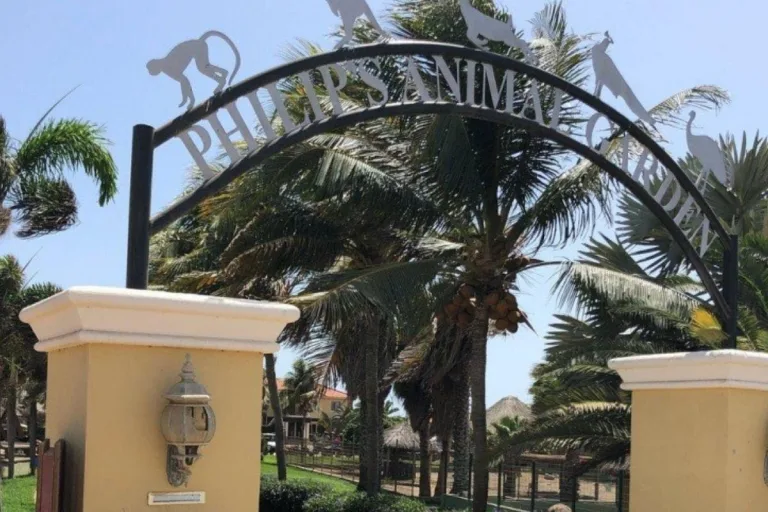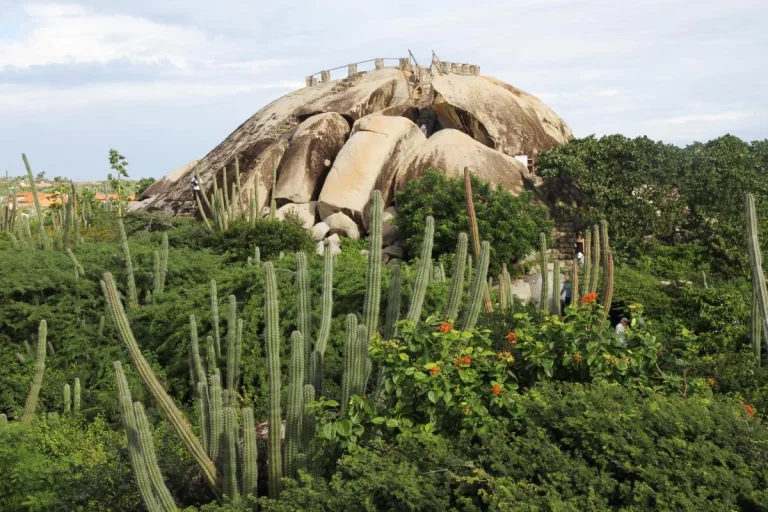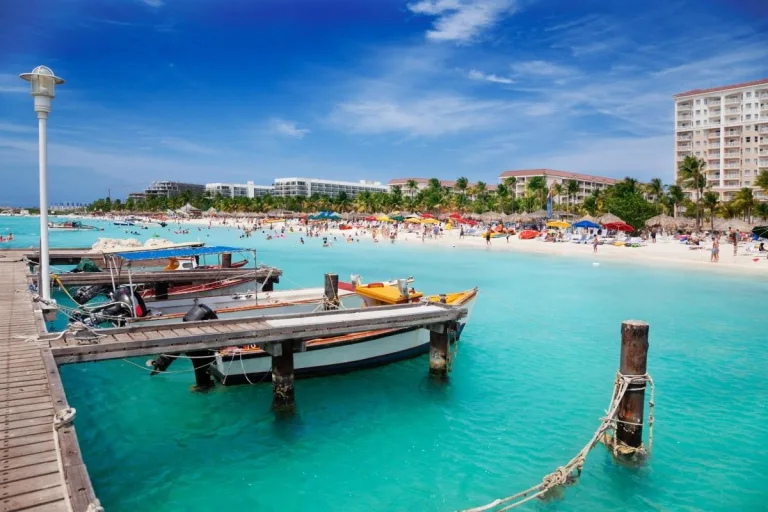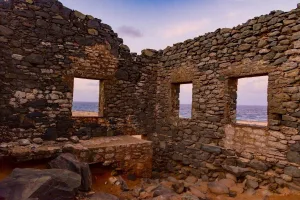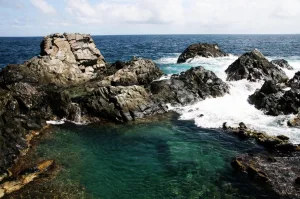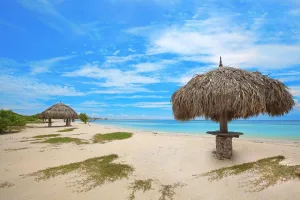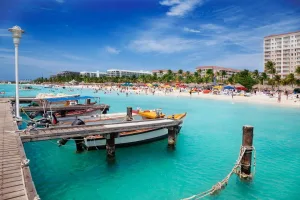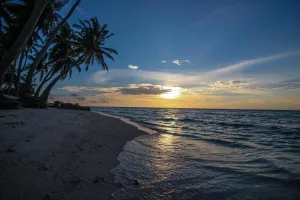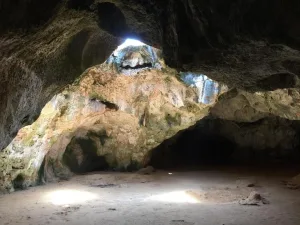The Ayo and Casibari rock formations are popular stops on many Aruba tours, despite the fact that they are basically piles of rocks woven with cacti. These natural structures offer a unique view of the volcanic forces on Aruba. Some intrepid travelers clamber on top of them to score panoramic views of the island.
Northeast of Hooiberg, Aruba, the Ayo and Casibari rock formations were purportedly used by the indigenous Arawak people to listen for approaching thunderstorms. The Arawak also carved paintings (known as petroglyphs) into the rocks during religious rituals. The formations are free to visit, and make a good spot to give the family a fun geology lesson. These structures are often included as a stop on island tours.
-
There are walking trails and steps to make exploring easier.
-
Wi-Fi is available at the Casibari rock formations, along with on-site food and drink.
-
Restrooms are available for a fee.
The Ayo formations are located near Ayo village, about 2 miles (3.2 kilometers) from the Natural Bridge toward Casibari, and about 20 minutes’ drive from the cruise ship terminal. The Casibari Formations are about 2 miles inland, between the Natural Bridge and Oranjestad; they’re on the way to Ayo, about 15 minutes from the terminal.
The formations are free to visit anytime, but if you want to avoid crowds and heat, it’s best to go early in the morning or late in the evening. In general, Aruba’s weather is warm year-round, with an average temperature of 82°F (28°C), so any time is the right time, but attractions will be more crowded during winter months when tourists want to escape colder climes.
A quick 7-minute drive north of the Ayo formations, the Bushiribana Gold Mill ruins are the remains of an ancient gold smelter built by prospectors in the late 1800s. The ruins are free to visit and explore, and offer a different perspective on Aruba, where gold was mined during the 19th century.



